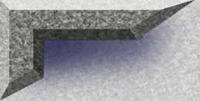Male or Female
First, decide whether a male or female suits you best.
Females tend to be smaller than males, to wander less, and to be less dominant. Whichever you choose, determine that, your
adopted pup must be spayed or neutered by six months of age. Spayed females cannot get pregnant, so there'll be
no accidental litters. They also cannot get mammary or uterine cancer or pyometra, an infection of the uterus.Castration reduces
the male's tendency to wander in search of females in heat, his need to mark every corner of his territory, and his penchant
for aggression and dominance. It also eliminates the chances of testicular cancer
Temperment
Next,decide if a quiet puppy,a submissive one,or a dominant
one is more to your liking. Even though temperament,size,and level of activity is constant within a breed, there is plenty
of room for individual differences
Check The Puppies
Sit or kneel on the ground and call the puppy to you. Snap
fingers, pat the ground, get the puppy's attention. If he comes quickly, he may have a strong attachment to people.If he stops
to smell the flowers along the way,he may have an independent streak.If he doesn't come ,he may have difficulty forming a
bond with people
Taking him from his littermates and introducing him to
a new home with new smells, sights, and sounds can be overwhelming for a pup, so take steps to assure an easy transition.Make
sure the pup has a spot to call his own, someplace he can go where he will not be pestered by children, other pets, or visitors.
This can be a crate, a purchased dog bed, or a blanket in the corner. The crate for a puppy should be a small one; an adult
size crate can be purchased when he outgrows the puppy crate. Bring a blanket or towel from his first home and put it in his
place along with a blanket or towel from your own supply. Dogs have a strong sense of smell; familiar smells will help him
feel more comfortable. Feed the same food that the rescue did, or mix some of a new brand in with the food
you prefer to gradually accustom the pup's system to the new diet.Confine the pup to a room occupied by an adult so you have
a better chance of preventing mischief and of catching him before he relieves himself on the floor. If you are distracted,
leave the pup in his crate for short periods while you work.If he is confined,your relationship stands a good chance
of getting off to a fine start-he can't soil the floor,chew the furniture, or bite baby's ankles if he is in the crate,so
won't start his life in your family being scolded.Place a crate in the bedroom of the person who is responsible for taking
the pup out during the night if he has to relieve himself.Proximity to people will help him adjust better to being without
his littermates, immediate attention to his toilet needs will make housetraining easier.
Visit A Vet
Plan a visit to the veterinarian within a 3 days
of bringing Rover home. If you don't have a vet yet this is a good time to choose a one. Bring a copy of rover's vaccination
and worming record and any other medical records. Ask the vet any questions you may have
Otherwise Stay At Home
Plan on keeping Rover at home (except for visits to the
vet and short trips to accustom him to riding in the car) until he is at least 12 weeks old and preferably until he's 16 weeks
old. Puppies get their initial immunity to disease from their mother. As the pup grows, he is vaccinated for continued protection
from several potentially fatal viruses and bacterial infections. However, there is usually a gap in protection as mother's
immunity decreases and administered immunity increases to a safe level.Pups can pick up bacteria or viruses from other dogs
on a walk in the park or a visit to puppy kindergarten class or to a friend's house. Diseases can be transmitted through dog
urine and feces, so a pup coming into contact with one or the other can become infected. People can bring germs home on their
shoes and clothing, so beware of visiting a friend whose dog has had any of the canine infectious diseases. Enjoy the puppy.
Guide him or trick him into correct behavior until it becomes habit. Play with him to help develop his confidence. But most
of all, enjoy the puppy. That's what you got him for.

